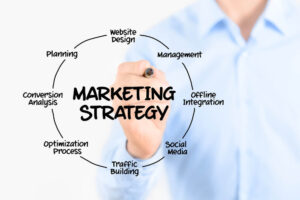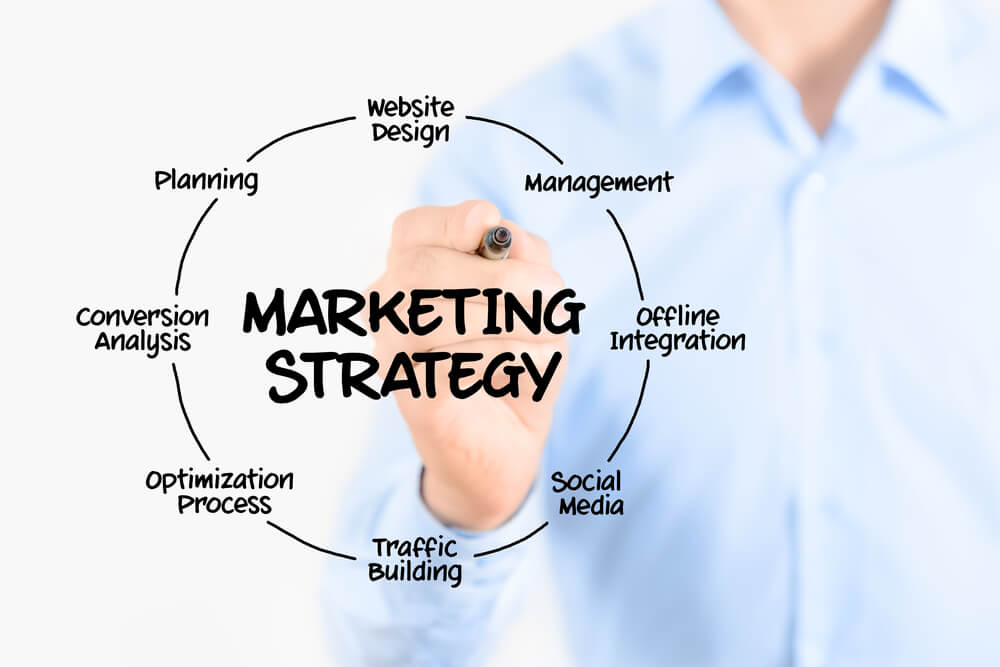Online Website Marketing
Online Website Marketing
An effective online marketing strategy should guide all of your digital marketing efforts, and can mean the difference between success and failure for your business.
Covering all aspects of your online presence, from branding to visibility, SEO strategy to customer acquisition, your strategy for growing your business via the internet should be comprehensive and well thought-out.Online Website Marketing

Online Website Marketing
Here are 5 key elements to build into a successful online marketing strategy.
1. A Robust Online Marketing Plan
Before you even lift a finger or invest a penny in online marketing you should take some time to create a clear plan. It doesn’t have to be complicated, but having a written plan will help you to stay focused over time. It can also serve as a roadmap for making decisions about priorities and budget.
Work with your digital marketing company – start with your destination in mind and write down your goals. You will need to answer a range of questions which your digital marketers will facilitate.
Your plan should be based on good research- about your customers, your competitors, your industry and your own business. It should include clear answers on important questions such as the ones below:
- Do you need to make a certain amount of sales per week or month to break even?
- What rate of sales growth do you want to see in the next year? In the next five years?
- Is there a specific type of ideal customer you want to attract?
- What is your current market share, and how much do you want to increase it?
- Do you want to dominate within a specific region, or are you looking to expand nationally? Or even globally?
- Who are your target audience, and how will you reach them?
- Who are your main competitors and what can you offer customers that they can’t?
- What marketing channels are your competitors using, and what is the size of their investment into each of these?
Once you have these goals defined you can work backwards to map out the steps that need to be taken to achieve them.
For example, what collateral and channels do you need to develop to attract and convert those customers? How big will your marketing investment need to be in order to compete effectively and reach these goals within your desired timeline? How many people need to enter the top of your marketing funnel (e.g. newsletter subscribers, social media followers or website visitors) to then convert into the necessary amount of sales to meet your growth targets?
It’s important to consider all elements of your online presence in any marketing plan, such as your website development, blog, SEO content, social media presence, email marketing, and online advertising.
All of these channels will contribute to your overall marketing program, some more directly than others. For example some forms of advertising might be great to raise your brand’s visibility, but might not result in sales, while SEO efforts for specific product terms can deliver a clearer return on investment.
A great marketing plan lets you see how each area interacts and supports others, letting you see the big picture.
How you prioritize each of these elements will depend on your unique business goals and strategy.
2. Partners You Trust
Your online marketing will likely be made up of many different moving parts. It’s unusual that all of these activities are handled in-house. It can be a huge help to have a great network of people to support each cog in this complex machine.
Experts can offer your business their specialist experience and skills while allowing your staff to focus on sales and customer service.
How much and what areas of your digital marketing you outsource is up to you, but you may want to consider working with expert partners for the following areas:
- Web development
- PPC ad campaign management
- SEO
- Email marketing
- Content marketing and distribution
- Social media management
- PR and media outreach
- Branding
For each of these areas, having the support and expertise of specialists can make a huge difference to marketing projects. They can assist at any and all stages, from planning through training, execution through reporting and optimisation.
Look for partners who have a great portfolio available for you to view, can demonstrate similar projects they have worked on and results for the client, and are happy to provide customer references.
Most of all, choose to work with people who you feel comfortable with. They should be a great fit for your business, showing a clear understanding of your goals and brand and be easy to communicate with.
Having reliable and experienced partners in place to help you execute your marketing campaigns can reduce the strain on your in-house team and help you to see better results from your budget.
3. Committed Online Marketing Budget
Having a plan is great, but not having sufficient budget to carry out key online marketing initiatives is a common roadblock that many businesses encounter.
You should have at least a rough idea of the investment that you will need to compete effectively in your area, as well as reach your short and long term goals.
The most difficult part of planning and parting with a marketing budget is when you first start setting up campaigns. Sometimes it can take a few tweaks to find just the right settings to see results. Many business owners are put off by these early failures and pull the plug on funding further marketing initiatives. But give up in the early days and you will never see the long term success that you need.
Try to look at your marketing budget as a long term investment.
This is not to say that any planned budget shouldn’t be flexible. On the contrary. You should be open to moving spending from one area that isn’t performing well to another that is producing consistently great results.
Another thing to consider is how you will scale up marketing campaigns that deliver great ROI. If Facebook ads are bringing you customers make sure they are doing so at a spend that results in profitable sales, allowing you to increase your investment in this channel to achieve even greater growth.
While we are on the topic of profitability, be sure to have a clear understanding of the return you are looking for from each spend. Think carefully about the goals of each campaign:
- Do you want to build your audience through new subscribers or followers?
- Is the value of a new customer more important than the value of a single sale?
The general rule of thumb is it to allocate 5% of your turnover to marketing costs if you want to maintain your presence, with this increasing to 10% if you are looking to grow or expand into new markets. Of course, this is just a rough indication and the actual amounts that you can or should invest will differ depending on your unique business circumstances, how competitive your industry is and what kind of ROI you can get from your spend.
The key thing is to understand that there are ongoing costs involved in online marketing and to include some kind of budget for these within your overall monthly and annual expenses.
4. Ongoing Reporting and Optimization
Reports and analysis are vital to letting you know what is working, and helping to guide improvements to your online marketing efforts.
It can be easy to feel overwhelmed by the amount of data available on offer, but here are some top level statistics that you should pay attention to:
Website
In your website analytics, monitor your weekly visits and be sure to set up goals to track average conversion rates. Things like newsletter sign up, orders or contact form submissions are great goals to track. Looking at top landing pages and the most visited content will allow you to have an understanding of what content is attracting and interesting your visitors, helping you to focus future content creation or even influence buying decisions.
If you have an ecommerce site, then tracking important visitor information is even more important. Make sure you can identify where customers come from, what paths they typically take to a sale and what they search for. Pay particular attention to the rate of abandoned carts so that you can test changes to the checkout process to improve sales.
Advertising
When it comes to advertising you want to track impressions to measure the exposure your campaign is delivering, and click through rate to see how engaged your audience is. And you absolutely must keep an eye on budget and average cost-per-click or cost-per-conversion to help you measure return on investment.
It can be too easy to focus on top level results in ad campaigns, such as the number of clicks. Track visitors from ads all the way through the sales cycle to better distinguish between campaigns that are just generating interest and those that are increasing profits.
For email campaigns, look at open and click rates, as well as any significant variations in results from A/B testing that you run on elements such as subject line and send times.
For even deeper analysis of how successful your email marketing is, look at website analytics for visits that come from email campaigns. Are they more likely to take a desired action? Do they spend longer on your site?
Track these metrics over time and you will be able to see what email content and schedule yields the best results.
For all of these statistics, knowing the average performance for any metric will let you quickly identify activities that perform better or worse and help to pinpoint ways in which you can improve.
5. A Clear Understanding of Your Customers
What drives your marketing messaging has less to do with you and much more to do with your customers.
Rather than thinking about what you want to say and sell, think about:
- What your customers care about
- What matters in their daily lives
- How your products or services can meet their needs
It is vital that you understand what influences their purchasing decisions. Do they do extensive research on their options, or does it simply come down to the lowest price?
Some customers may pay a lot of attention to reviews, in which case building a strong portfolio of positive testimonials should form a part of your marketing strategy.
Investigate what channels your ideal customers typically use. Do they respond better to email or advertising? Should you spend more time reaching them on Twitter or Pinterest? Do they read lifestyle magazine blogs, or rely on Facebook for content recommendations?
Buyer profiles are one way that can help you to create a complete picture of your ideal customer, helping you to create marketing campaigns that are highly tailored to their individual wants, needs and buying habits.
Don’t forget that you may have different types of customers. Perhaps they buy different products, or have different levels of spending. Make sure you take this into account in order to tailor your marketing to each audience.
2 Good Reasons to Document Your Online Marketing Strategy
Investing time and effort into a strong online marketing strategy is well worth it. Here are two very compelling reasons to make sure this strategy is well documented and accessible.
- It will serve you well as a reference document time and again as you look to improve results, reach larger audiences and improve the effectiveness of your campaigns.
- Having a central document is also a great tool to make sure that all of your staff and any partners are working with the same information. If a key member of your marketing team leaves it is a great way to provide background to their replacement.
As a last piece of advice, be sure to review your strategy regularly. Online marketing is constantly changing, and it is important that your strategy adapts to include new channels and best practices and evolves to meet the changing needs of your business.

